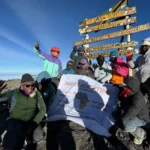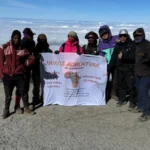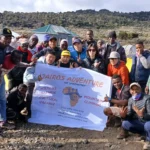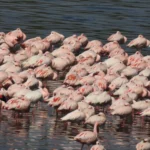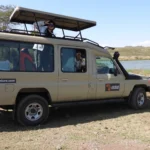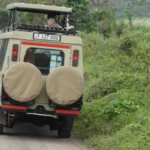Kilimanjaro National Park
The highest mountain in Africa, snow caped and world’s highest free standing volcano. It comprises of two dormant volcanoes (Kibo 5,895m a.m.s.l and Mawenzi 5,149m a.m.s.l) and one extinct volcano (Shira 3,962m a.m.s.l) respectively. The origin of the word is not well known but it said to be a combination of the Swahili word Kilima meaning “Mountain” and the KiChagga word Njaro, loosely translated as “Whiteness” giving the name “White Mountain”.
Mount Kilimanjaro Climate
There are two rainy seasons in a year. The wet season is from March to May during which it rains around the mountain base and snow accumulates on its peak.
The dry season is from late June through September during which the nights are cool and the days completely clear.
The park is located at an altitude between 1700 m to 5895 meter with annual average rainfall ranging from 828 mm at alpine desert to 2500 mm at Montane forest.
Getting there
The park can be accessed by road or flight via Kilimanjaro International Airport – about 45km to the west. The Park Headquarters and one of the ascending gates are at Marangu, about 41Km from Moshi town and 86km from Kilimanjaro International Airport. The other seven gates of Rongai, Machame, Londorosi, Lemosho, Kilema, Mweka and Umbwe are located around the mountain base and can be reached by road.
Mount Kilimanjaro Attractions
The Park is endowed with a diverse variety of attractions ranging from terrestrial wilderness to permanent glaciers on the mountain peaks.
Three peaks
Kibo,Shira and Mawenzi the highest peak (5,895m) on Mount Kilimanjaro, is covered by snow throughout the year despite being close to the equator. Conquering this peak is an adventure of a lifetime.
Montane Forest
A wide band of exceptionally beautiful montane forest encircles the whole of Kilimanjaro from about 1800 –2800m.
Zonation of Vegetation
Five eco-climatic zones take you to the equivalent of a trip from the equator to the arctic in a brief tour.
Birds and Animals
The park harbors a total number of 140 species of mammals; 7 primates, 25 carnivores, 25 antelopes, 24 species of bat and 179 bird species
Lauwo Waterfall
Located along Marangu route 2.8Kms provides a spectacular experience while enjoying walking inside the thick montane forest.
Maundi Crater
Located just 15 minutes walk past Mandara huts on the Marangu route the crater provides a panoramic view of Lakes Chala, Jipe and Nyumba ya Mungu, all of which derive their waters from the Majestic Kilimanjaro.
Activities
The park is endowed with various tourism activities that visitors can do during their visit. The activities includes; Mountain Climbing to the Summit (MC), Paragliding, Nature Walking Safaris (Short Walking Safaris (SWS)), Long Walking Safaris (LWS), Mawenzi Technical Climbing (MTC), Picnicking, Filming, Non-Summit Bound Climbers, Crater Camping and Mountain Cycling (MB).











